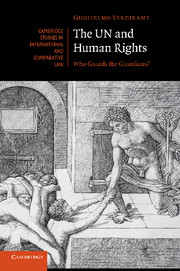Book contents
- Frontmatter
- Contents
- Foreword
- Acknowledgements
- Abbreviations
- Table of cases (international)
- Table of cases (national)
- Table of legal instruments
- Introduction
- 1 Concepts and definitions
- 2 Human rights obligations of international organisations
- 3 International institutional responsibility
- 4 UN relief and development operations
- 5 UN peacekeeping operations
- 6 International administrations
- 7 Implementation of UN sanctions
- 8 Accountability
- Conclusions
- Bibliography
- Index
Foreword
Published online by Cambridge University Press: 07 October 2011
- Frontmatter
- Contents
- Foreword
- Acknowledgements
- Abbreviations
- Table of cases (international)
- Table of cases (national)
- Table of legal instruments
- Introduction
- 1 Concepts and definitions
- 2 Human rights obligations of international organisations
- 3 International institutional responsibility
- 4 UN relief and development operations
- 5 UN peacekeeping operations
- 6 International administrations
- 7 Implementation of UN sanctions
- 8 Accountability
- Conclusions
- Bibliography
- Index
Summary
The framers of the Charter of the United Nations ‘decided to create an organisation to ensure respect for fundamental human rights, establish conditions under which justice and the rule of law could be maintained, and “promote social progress and better standards of life in larger freedom”’. But in setting out these lofty ideals they could not have foreseen the wide range of tasks the organisation would be called upon to undertake by its member states and the challenges these would present for it to act consistently with its own expressed moral values. By the end of the first decade of the twenty-first century these have evolved to include peacekeeping, peacebuilding and peace enforcement; field operations; de jure exercise of legislative, executive and judicial power through the administration of territory (for a relatively short period as in Timor-Leste or for nearly a decade as in Kosovo); de facto exercise of powers in refugee camps; sanctioning behaviour deemed to threaten international peace and security; and delivery of relief or humanitarian assistance in multiple forms and places. None of these undertakings can be performed through following a template; rather the demands of each vary according to place and context, the mandate and the persons involved. There is today a paradox: on the one hand there has been ‘declining public confidence’ in the organisation while on the other ever more complex and dangerous mandates have been assigned to it.
Alongside the expansion in the nature and functions of international organisations has been another, interrelated, story, that of the growth of human rights law and procedures. Through the work first of its Commission on Human Rights and more recently that of the Human Rights Council, the UN has created a significant edifice for the protection of human rights and fundamental freedoms. Today UN member states are bound by a plethora of human rights standards and are answerable to a number of mechanisms for failure to comply with those obligations. However, these two stories sit somewhat uneasily together: the UN has too often fallen short in ensuring high standards of respect for fundamental human rights and the rule of law from its own personnel, thereby undermining trust in the institution in the very persons it has been mandated to serve.
- Type
- Chapter
- Information
- The UN and Human RightsWho Guards the Guardians?, pp. xi - xiiiPublisher: Cambridge University PressPrint publication year: 2011



